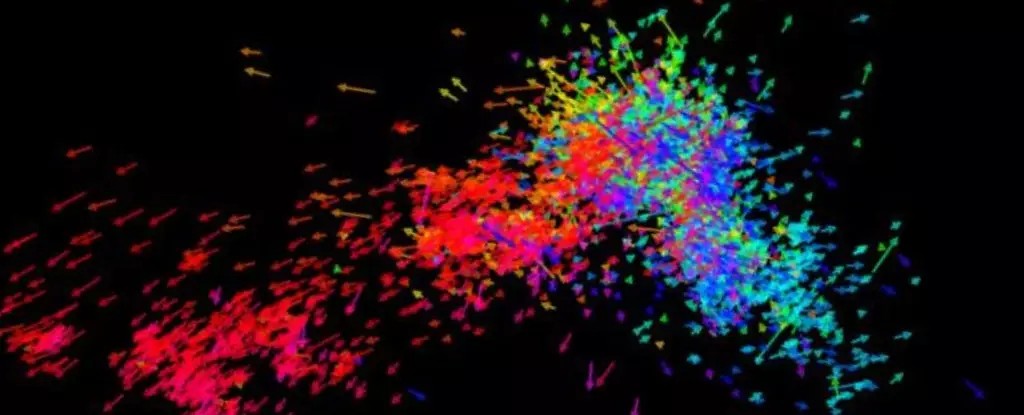Recent findings from researchers at Nagoya University have unveiled a striking phenomenon in the cosmic arena—the Small Magellanic Cloud (SMC) is on a perilous trajectory, being systematically torn apart by the gravitational influence of its larger companion, the Large Magellanic Cloud (LMC). This discovery not only sheds light on the violent beauty of the universe but also challenges our existing paradigms regarding galactic interactions. The two Magellanic Clouds, stunning irregular dwarf galaxies that have graced the skies of the Southern Hemisphere, were named after the legendary explorer Ferdinand Magellan, whose daring voyages of the 16th century brought them to human attention.
Understanding the Irregularities
At a staggering distance of approximately 160,000 to 200,000 light-years, the SMC and LMC orbit around our own Milky Way, each rich with star formation and gas. Their connection through the Magellanic Bridge—a gaseous arch stretching across the cosmic landscape—illustrates a complex relationship marked by gravitational tugging, where tidal forces are not merely a backdrop but rather a catalyst for galactic evolution. As researchers delve deeper into the dynamics of these satellites, they are revealing patterns of movement in the SMC that speak to a much larger narrative—a narrative marked by disruption, interaction, and eventual demise.
Lead researchers Satoya Nakano and Kengo Tachihara captured the movement of roughly 7,000 massive stars, each at least eight times the mass of our Sun. The gravitational dance these stars participate in is both mesmerizing and alarming; they are seen traveling in opposing directions, some racing towards the looming presence of the LMC while others escape into the void of the cosmos. This unexpected behavior provides compelling insight into the SMC’s precarious existence, raising important questions about its future as it experiences a constant state of galactic disintegration.
Breaking Down Rotational Patterns
One of the more profound revelations from Nakano and Tachihara’s study is the absence of rotational movement in the SMC’s massive stars—a stark contrast to the harmony observed in galaxies like our Milky Way. In a universe where stars typically coalesce around a shared rotational axis, the SMC’s stars appear disjointed, lacking the synchronized motion we often take for granted. This discrepancy hints at a dissociation between the stars and the gas clouds from which they were born, igniting a spark of curiosity about the evolutionary processes that govern these celestial bodies.
This lack of rotational coherence suggests that the gas itself, a vital component for star formation and galactic stability, isn’t in motion as expected. Such an anomaly may compel scientists to rethink not only the mass calculations of the SMC but also its gravitational interactions with both the LMC and our Milky Way. It may well redefine our three-body understanding of these gravitational interactions—unveiling a complexity previously overlooked.
The Examined Nexus of Galaxy Evolution
The implications of this research are significant, offering a fresh perspective on how galaxies interact and evolve, particularly in the formative epochs of the universe. By examining the SMC—which bears similarities to primordial galaxies—scientists can glean insights into the early stages of galaxy formation and the dynamic processes that shape stellar environments. The SMC is not merely a victim of gravitational pressure; it serves as a vivid reminder of the aggressive and violent nature of cosmic evolution.
As we observe the stellar movements within these galaxies, we inch closer to understanding the intricate connections between star formation and the gravitational forces at play. This research poses an exciting chapter in the broader narrative of cosmic evolution—where stellar life, death, and rebirth intertwine with the complex relationships between neighboring galaxies.
Impacts on Cosmology
In this grand chess game of the universe, every piece matters. The game-like dynamics of gravitational forces and stellar movements provide critical insight into the evolution of galaxies. The SMC’s ongoing struggle against the tidal forces of the LMC exemplifies how interplay between celestial bodies fosters new understandings of the cosmos. As researchers continue to explore these relationships, we might uncover more secrets lurking in the darkness of space—secrets that could revolutionize our understanding of the universe at large, paving the way for future explorations into the mysteries of the galaxy.

